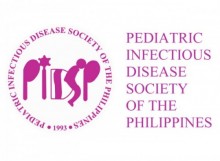Journal 2018 Vol.19 No.2
Outcome of Current Antibiotic Regimens used for Neonatal Sepsis in a Tertiary Hospital
Anne Melva V. Meliton-Ruiz, M.D., Robert Dennis J. Garcia, M.D.
Abstracts
Objective: This paper looked into the outcome of currently used antibiotic regimens for neonatal sepsis in a tertiary hospital.
Methods: This retrospective study reviewed all cases of culture positive neonatal sepsis delivered in a tertiary hospital between January 1, 2000 to December 31, 2015. Demographic profile, stratification as to early-onset and late-onset sepsis, clinical manifestations, culture and antimicrobial susceptibility results, and outcomes were analyzed.
Results: There were 28 cases of culture positive neonatal sepsis reported during the study period, and prematurity and low birth weight were the major risk factors identified. Of these, 8 were early-onset sepsis and 20 were late-onset sepsis cases. Respiratory symptoms were the most common presenting manifestations. Sepsis isolates were evenly distributed between gram-negative bacilli and gram-positive cocci with no ESBL E. coli or Klebsiella pneumoniae identified. The institution’s current empiric antibiotic regimen of cefuroxime and amikacin for early-onset neonatal sepsis was shifted to another drug in 57% of cases. Piperacillintazobactam or carbapenem was given for late-onset sepsis. The addition of vancomycin for late-onset sepsis was done where Staphylococcus was considered. Sepsis due to gram-negative bacilli had a high mortality rate.
Conclusion: Our institution’s empiric antibiotic regimen which consists of cefuroxime and amikacin for early onset sepsis is effective in 43% of cases. A carbapenem or piperacillin-tazobactam, even without amikacin, proved to be effective for late-onset sepsis. Vancomycin, should be considered for late-onset sepsis, if staphyloccoccal disease is suspected.
Keywords: neonatal sepsis, antibiotic, neonate, low birth weight
https://doi.org/10.56964/pidspj20181902007
| View Full Article in PDF format |
Journal 2018 Vol.19 No.2 Original Articles 5pidsp@uplink.com.ph2022-12-10T09:07:36+00:00
